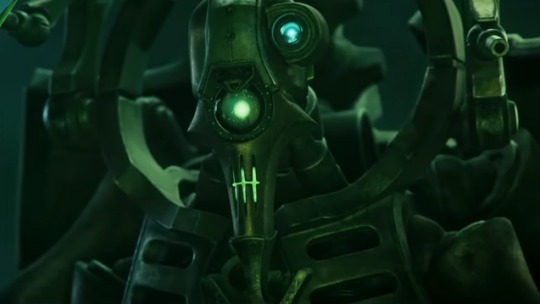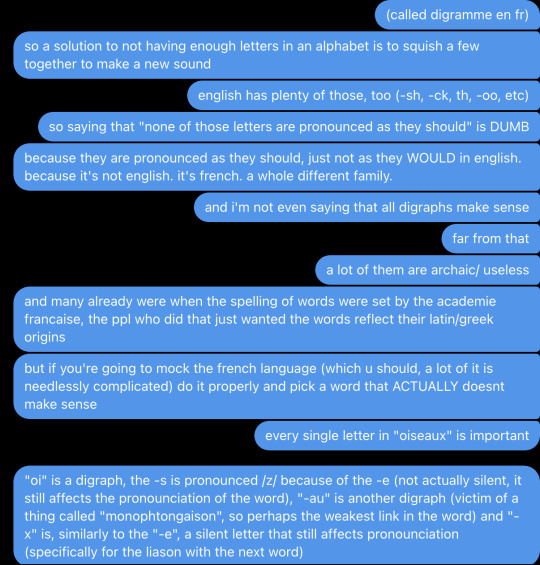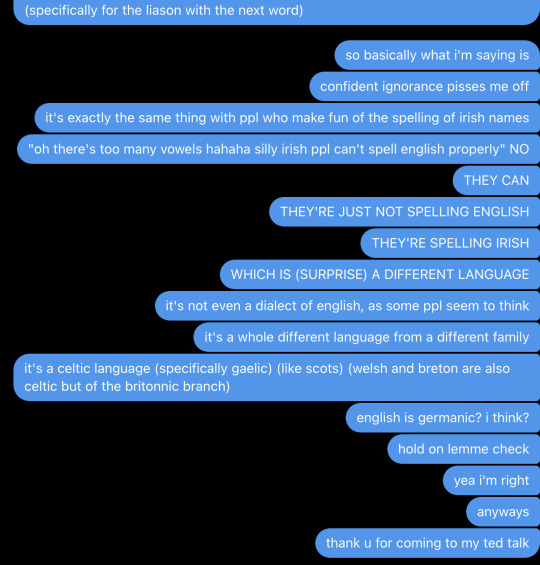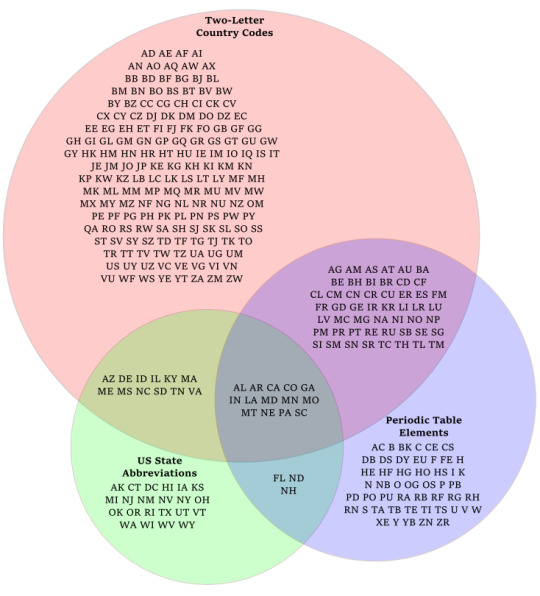#digraphic
Explore tagged Tumblr posts
Text
pronouncing the necron 'sz': personal rating list*

broke: /s/ only ('seras')
woke: /z/ only ('zeras')
provoke: /s/ and /z/ pronounced separately ('s-ze-ras')
bespoke: /ʂ/ or /ʃ/ ('scheras')
invoke: tensed fricative /s͈/ ('sseras')
misspoke: /s/ but evil ('ßeras')
(* Further notes in tags.)
#warhammer 40k#wh40k#necrons#illuminor szeras#necron#shitpost#german speakers i am so sorry you had to read that with your eyes 😂 i also speak german i do know eszetts can't start words#originally this was just for fun but it seems there are quite a lot of ways wh40k fans pronounce this#native english speaking fans usually seem to stick to 's'#whereas in languages that actually use this digraph it would be s/ʂ/ʃ#but in korean translations 'sz' defaults to 'z' so it's definitely 'zeras (제라스)' and 'zarekh (자렉)'#and sometimes the 's' and 'z' are both present and pronounced like in japanese ('s-za-rekh';スザーレク)#(i personally use ʃ because it seems the logical compromise)#in lore terms i think all or most of those pronunciations were used among the necrontyr and there is not one 'canon' version#variety is the spice of life it's fine they're all good. well maybe not the last one but still 😂#according to TDK the necrontyr didn't have a united language until szarekh came along so they must've had different dialects#i reckon that's why the silent king made his universal language. so people could pronounce his name how HE specifically wanted it#it's all becoming so clear now!!!! 😬
96 notes
·
View notes
Text
hi hello i just saw one too many bad meme making fun of the french language so here is a PSA in the form of angry texts i sent my gc at 3am <3
(for context, this is abt the tumblr post that said that the word "oiseaux" (pronounced "wazo") makes no sense)



like ik it's a lot, and idk if all of it makes sense, but i'm kind of a nerd for linguistics so i felt the need to defend my language lol
#a lot of these things are much more complicated than how i explained them#but this is the gist of it#PLEASE tell me if i made any mistakes so i can correct them#this is NOT me being patriotic btw#it's me being a nerd#i wouldnt dream of defending french just coz it's my country's language#linguistics#languages#etymology#french#french language#just me ranting at 3am about digraphs like a normal person <3
10 notes
·
View notes
Text
god i wish latin'd had /ʃ/ so we could have a proper letter for it in our alphabet
#<sh> and <sj> and <š> work FINE but itd be nice to not have to rely on digraphs or diacritics#german <sch> can go to hell#i respect hungarian <s> for /ʃ/ and <sz> for /s/. kinda gutsy#drop your favourite /ʃ/ romanizations in the comments below!#ramblings
20 notes
·
View notes
Text
Dathomir Daily
Tunorr su nī sho thol’onzhul. (Look me in the eye.)
(Toonorr soo neye shah thahl-onzh-ool.)
This is a statement used like “give it to me straight” or “come clean”. Eye contact isn’t usually done outside of intimate relationships of family or close loved ones. Otherwise it’s seen as threatening.

Tag list: @alexeithegoat @thesitharts @crc-jedi-knight-serushna @hotshot9 @smoooothbrain @gran-maul-seizure @foreverchangingfandomsao3 @herbalinz-of-yesteryear @justalittletomato @stardustbee @storm89 @by-the-primes @ohboi @and-claudia @eloquentmoon

#general’s log#dathomir daily#dathomiri#I’ve done some work on the alphabet#added some symbols and such for oo sounds and digraphs#as well as the rr and zh sounds#aaaand I just realized I need aw and ow… 😭#ehehehe sorry I forgot the pronunciation guide
27 notes
·
View notes
Text
yorév sëbán gháziriyer dathá ḫáwasësaḥ yóqir búrm ahah
#first yearning post#anyways i keep thinking about reworking the latin orthography but i actually dont know if i like or dislike the digraphs#i also dont know if i like the letters i chose for the pharyngeals#so the question is do i make it basic keyboard friendly or do i make it in such a fucked up way that i will have to make a keyboard for it#sorkish conlang
4 notes
·
View notes
Text
said "sup guys" to my spelling group today and was immediately humbled by an eight year old going "miss said 'sup!' Miss are you trying to do slang?" followed up five minutes later-while I'm trying to teach 'ei' words- with "miss were you being cool?" while I'm just stood there in my pink hello kitty jumper, grey love heart hijab and rainbow platform converse like "am I NOT???"
#banana speaks 🍌#honestly working w 8-9 year olds is such a trip esp after being w 4-6 yr olds for three years 😭#that was so embarrassing i legitimately keep thinking ab it its like she hit me w a double kill shot lmaooo#this coming from the sweetest one in the group who once told me that i had good style hahaha#teaching life#also was v fun i started the lesson asking them all to give me a word w the ei digraph#and one kid yelled SENSEI & then looked really happy/surprised that i actually wrote it on the board😭 it was so sweet
2 notes
·
View notes
Text
Bless this random 1684 woman hand writing her recipe book for including a legend for the abbreviations she uses :')

#they're all standard since medieval times but literacy being less exclusive by this point means she bothers to explain!!#and they're also presumably a bit more confusing to an audience starting to get used to print and unused to 'y' meaning 'th'#the thorn being LONG in the past by then#(actually with is usually Wt not Wth so that might be related to 'th' being a more obvious digraph by now?)#and the ampersand (&) included as an 'abbre[v]iation'! cause it started as shorthand for 'et'!#ghost.post
2 notes
·
View notes
Note
you are no longer tea D:
I'M STILL CUP OF TEA! Just in Czech* now.
7 notes
·
View notes
Text
is it me or is the english /u/ a radically different sound to the french /u/
3 notes
·
View notes
Text
horrifyingly plummeting literacy rates aside that phonics post reminded me of work :')
#where did u get that p sound from shksfhskfj FELT#for context: I teach adults english and literacy#they barely have any education in their first language so they lack foundations in phonics and print#and a lot of them will try to guess words from first/last letters and context clues#but i always always bring it back to phonics#1 letter 1 sound!!! (unless its digraphs - but thats the next level up)#this is a post
0 notes
Text
teaching digraphs to my 11 year old today and... I'm so sorry ESL speakers
#you dont realise how weird english is until you teach it#half of the letters you dont pronounce#one of the digraphs “gh” ypu just don't pronounce at all#moonmoon rambles
0 notes
Text
number one way to piss me off instantly is to trot out the wine dark sea as "evidence" that the ancient greeks "couldn't see blue"
first of all "wine dark" is not a literal translation, it's an interpretation of a metaphor that doesn't mention color at all and is comparing the choppiness of the sea to intoxication/drunkenness, not to the literal dark tone of red wine
second of all, if you think lacking a base word for blue is evidence of an inability to see blue, you don't understand how language works and are making ridiculous assumptions about people's biology and color vision from only a couple thousand years ago, based on a non-literal translation of one specific work
third of all they literally did have ways to discuss the color blue. but even if they didn't, not everything is identical to the american english language approach anyway, and there is generally no such thing as a universal trait in linguistics, so even something you take for granted being absent in another language isn't actually evidence for some kind of fundamental biological difference (frankly that veers too close to eugenics for my liking), and is just a different approach to contextualizing reality.
#nadia rambles#while i'm at it: the sapir-wharf hypothesis is fundamentally flawed#and ghoti is a stupid and ignorant ''linguistics'' joke that ignores contextual phonetics#despite the fact that context is REQUIRED for language to function including alternate phonemes for specific letterforms and digraphs#it is Not pronounced fish. why? gh is only /f/ following a specific combination of vowels#o is rarely if ever pronounced as /ɪ/ except in hyper specific mostly dialect based contexts#i don't even remember the reasoning behind t or i but i guarantee you it's just as bullshit#it pisses me off and isn't even a logical joke if you know even the bare minimum about phonotactics in english#and alternate or unusual pronunciations like this arose in specific patterns based on sound shifts and spelling changes#NOT at random with zero logic or consistency#--inb4 ''it's not that deep'' i don't care. stop buying into every super overblown clickbait claim you see online#or stupidass jokes that anyone with a basic grasp of phonetics would understand to be completely baseless
1 note
·
View note
Text

0 notes
Text
after all this time, i’ve come to the conclusion that a lot of topics stick in my head if you break down their etymology
#digraph is literally 2 letters. thats what its called. just a fancy way of saying 2 letters#deeply unserious#study blog
0 notes
Note
y'all i am going to lose my shit H IS NOT A FREE LETTER IT REPLACES ANOTHER
Hey so technically speaking with the whole mirror-names thing, couldn't someone from Roshar technically be named Uwu.
The worst part about this ask is that only holy beings are supposed to have 100% mirror names.
UWU WOULD BE A GOD.
#and also “th” is a digraph and not the same fucking thing in the first place#please for the love of Tanavast do the symmetry stuff correctly#i am BEGGING y'all#stormlight archive
559 notes
·
View notes
